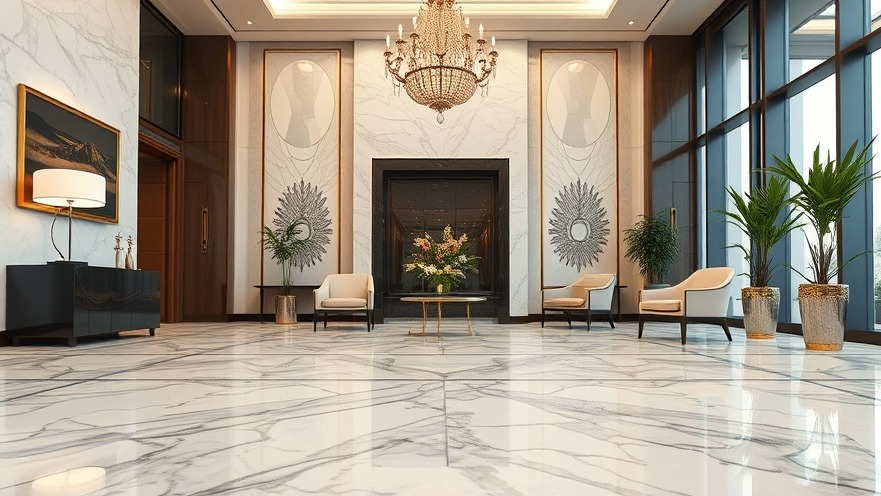
Why Red Metal Roofs Are Gaining Popularity in Design
Modern architecture often reflects a blend of functionality and aesthetic appeal. One trend gaining traction is the use of bold red metal roofs, celebrated for their vibrant visual impact and practicality. As remote work continues to merge with life at home, the elements of a home, including architecture and design, play crucial roles in productivity and overall well-being. Particularly for digital nomads, who may seek inspiration from their surroundings, the design of a home can greatly influence their workspace.
Spotlight on Unique Houses with Red Metal Roofs
The allure of red metal roofs is evident in several innovative architectural projects across the globe. Each of these homes demonstrates how a simple element can transform an ordinary structure into a functional and eye-catching workspace.
Gate Lodge, Navan, Ireland
At the entrance to Beechville Estate, the Gate Lodge by A2 Architects exemplifies how traditional designs can incorporate modern flair. Its pyramidal roof, outfitted with red corrugated metal and a skylight, not only stands out against the white-washed walls but also enhances natural light in the workspace. The choice of material pays homage to historical gatekeeper lodges while innovatively addressing contemporary needs.
Ceangal House, South Lanarkshire, Scotland
Loader Monteith’s Ceangal House shows how agricultural design can inspire functional residential spaces. The contrasting red metal roof sits atop reclaimed sandstone, blending the natural and manmade seamlessly. This home’s design respects its agricultural origins while providing an inspiring environment for digital nomads seeking comfort and creativity in their remote workspaces. Integrating reclaimed materials can also serve as a reminder of sustainability—a key aspect of wellness in today’s design philosophy.
Cairnconon Byre, Angus, Scotland
Another success from Loader Monteith, Cairnconon Byre combines rustic charm with modern utility. The unrendered stone walls and corrugated metal roofing reflect the traditional byres of rural Scotland. As project architect Jamie Mack notes, the natural aging of metal creates a vivid, yet warm, atmosphere, promoting an inviting workspace. Such design elements can enhance mindfulness, an important factor for those working from home.
Thornbury House, Melbourne, Australia
In Melbourne, Healy Ryan Architects crafted an extension that respects the existing bungalow's character while introducing a bold aesthetic through its roof. This design utilizes standing-seam steel panels in a deep brick-red. By thoughtfully matching the renovations to local styles yet incorporating modern materials, digital nomads can feel a sense of belonging while enjoying an innovative workspace.
Bathhouse, Hankøsundet, Norway
Offering a fresh take on traditional boathouses, Handegård Arkitektur’s Bathhouse enhances the visual landscape with its striking red cabin. Positioned by the water, it not only serves as a reminder of Norway’s coastal heritage but also demonstrates how a thoughtfully designed workspace can draw inspiration from the environment. The use of granite columns linking the structure back to the land creates an immersive experience that can invigorate creative thinking.
Creating Comfortable Workspaces
As digital nomads, creating an efficient, comfortable workspace is essential for productivity. Integrating features such as ample natural light, ergonomic furnishings, and inspirational decor can enhance the work experience. The vibrant color of red roofs can uplift mood and stimulate energy, fostering creativity and focus—key elements for success in remote work.
Conclusion: The Balance of Aesthetics and Functionality
The trend of red metal roofs is illustrative of a larger movement towards merging beauty with functionality in contemporary architecture. For digital nomads, whose work often blends with home life, investing in thoughtful domestic spaces that prioritize ergonomics and visual stimulation can lead to improved productivity and overall wellness. Embracing innovative designs like those featured here may inspire your next home upgrade or workspace enhancement.
As you explore the fantastic options available, consider how adaptability and beauty can converge to create your ideal remote work environment. Elevate your workspace and experience how it transforms your productivity and creativity. Let the architecture around you inspire new heights in your work-from-home journey.
 Add Row
Add Row  Add
Add 




Write A Comment